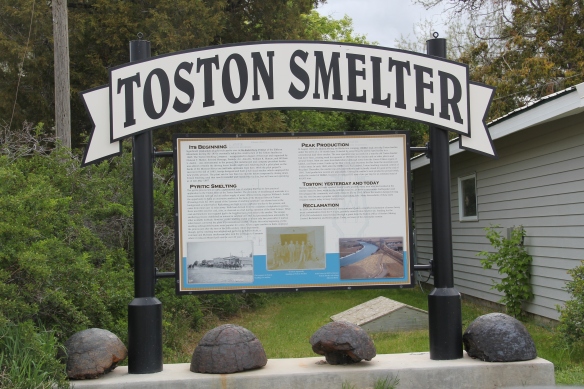Fergus County, with Lewistown as the county seat, lies at the heart of Central Montana. Although gold and other precious minerals were found at Maiden and other sites in the early years, the region grew once the railroads came at the turn of the century. More than a dozen substantial agricultural trade centers, all connected to Lewistown by the rails, soon surrounded the county seat. When I surveyed the region in the 1980s, the continued vitality of these towns impressed–and they still deserve a close look today.
In 1984 I came looking for railroad depots, frankly, but was blown away by the Farmers State Bank, one of the best “strongbox” style of small town banks I had encountered anywhere in Montana. The town then was in a pattern of slow, steady decline, from a high of 435 residents in 1950 to 356 in 1980. That rate in most Montana country towns meant that the bank was long gone–but here it remained and stood proudly along Highway 81.
Thirty years later, the bank building still made its statement of permanence in materials (brick) and in style along the highway. Indeed, the town’s population had continued to slip downward, especially in the last 20 years, reaching a mere 255 residents in the last census. But the bank remains–and even has a new addition to the rear of the building.
I passed by this iconic Fergus County building in late May of this year, just weeks after the completion of its merger with Dutton State Bank (another great building to be discussed later). All was well: it remained one of Denton’s anchors.
 The town’s schools are another important anchor. The football field (see the first image) serves as the eastern gateway to Denton; the schools are bunched together as though they grew organically from that spot one hundred years ago and have evolved ever since.
The town’s schools are another important anchor. The football field (see the first image) serves as the eastern gateway to Denton; the schools are bunched together as though they grew organically from that spot one hundred years ago and have evolved ever since.
True, Denton and its neighbor to the west Coffee Creek celebrated their centennials in 2013. And it was appropriate that a granary announced this fact since grain is king here. The elevators standing along the old Milwaukee Road line still boldly state the importance of agriculture to Denton. Even after the Milwaukee ceased operations in 1980 state officials worked with local governments and ranchers to create a new Central Montana line, which kept the elevators running, and in more recent times, has made Denton the western terminus of the popular Charlie Russell Choo-Choo excursion train.
Schools, a bank, and grain elevators are anchors but Denton also has maintained vibrant cultural institutions from its town library, housed in a brilliant c1960 building, and churches such as the historic Gothic-styled Our Savior Lutheran Church and St. Anthony Catholic Church.
Residents also have kept the local Masonic Lodge in operation, housed in the 2nd floor of the post office building, which, due to its overall neoclassical style-appearance and corner lot setting, was probably a bank building built shortly after Denton became a town in 1913.













































